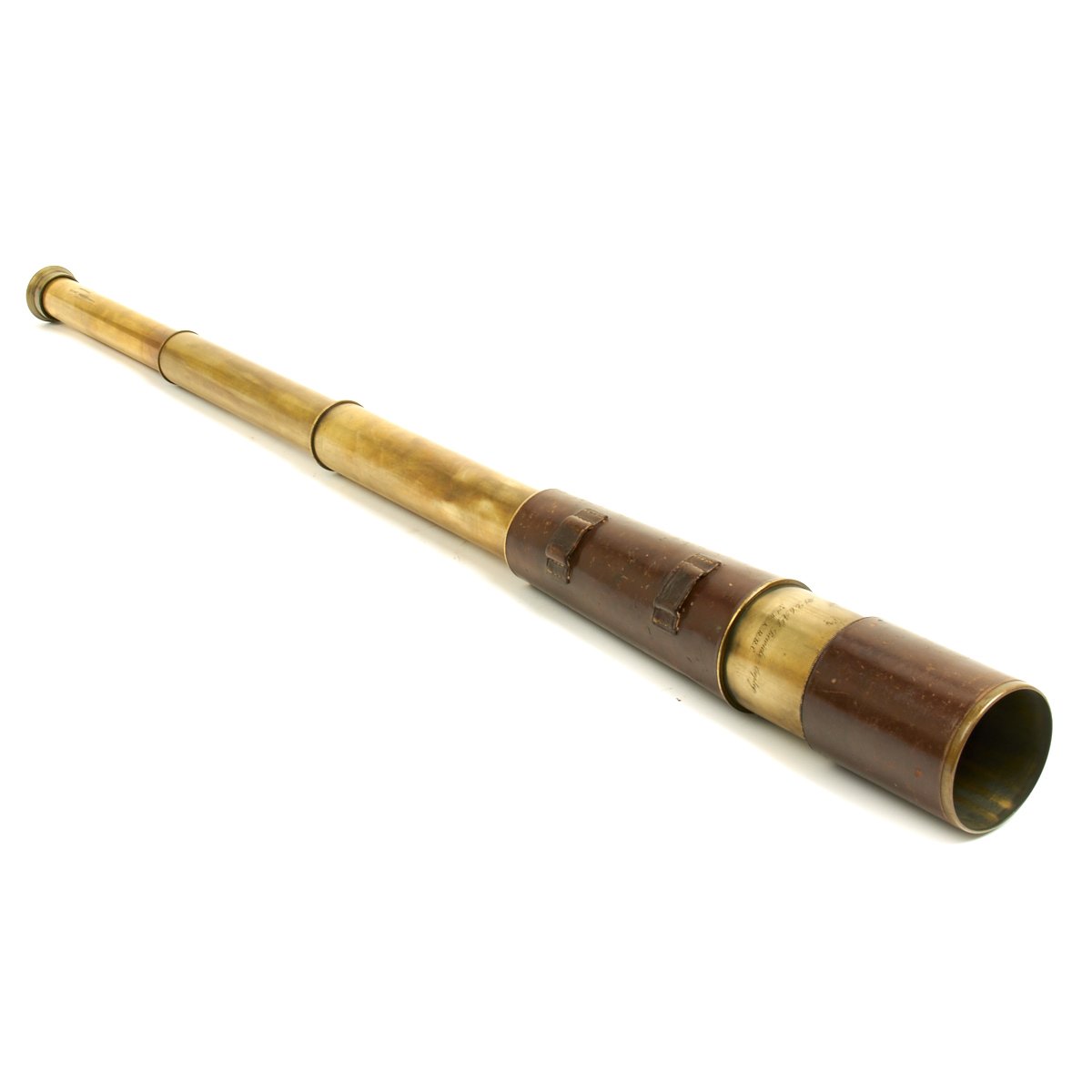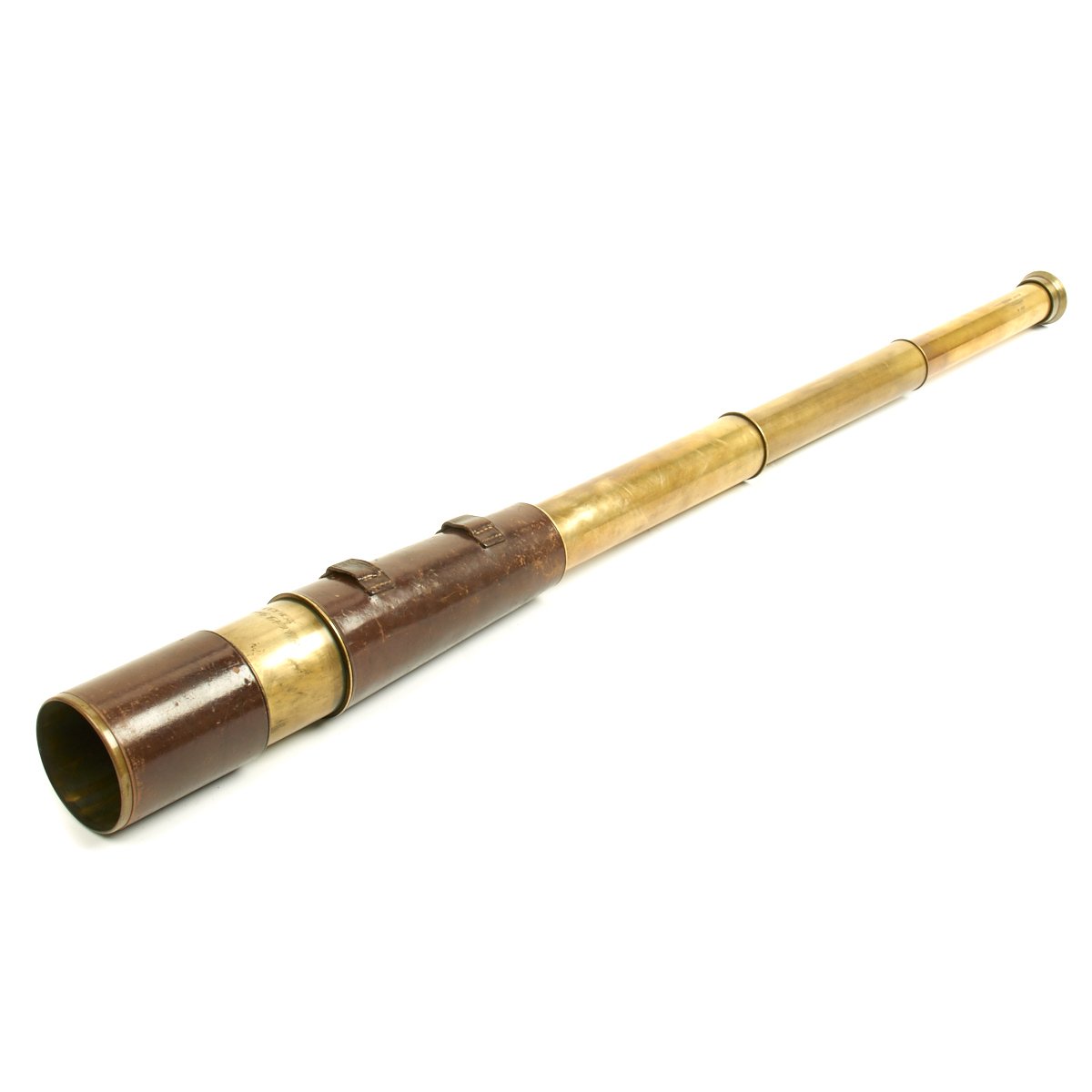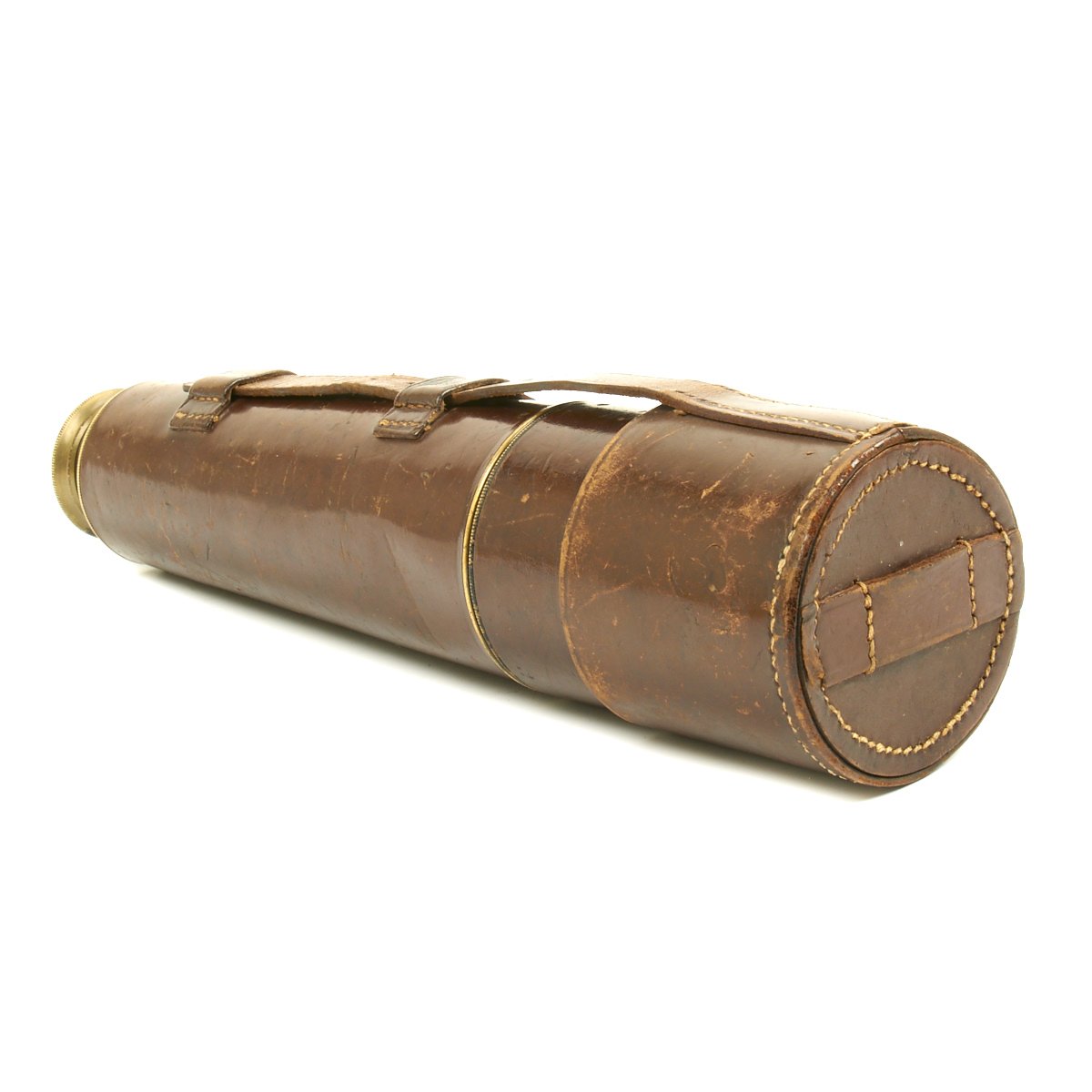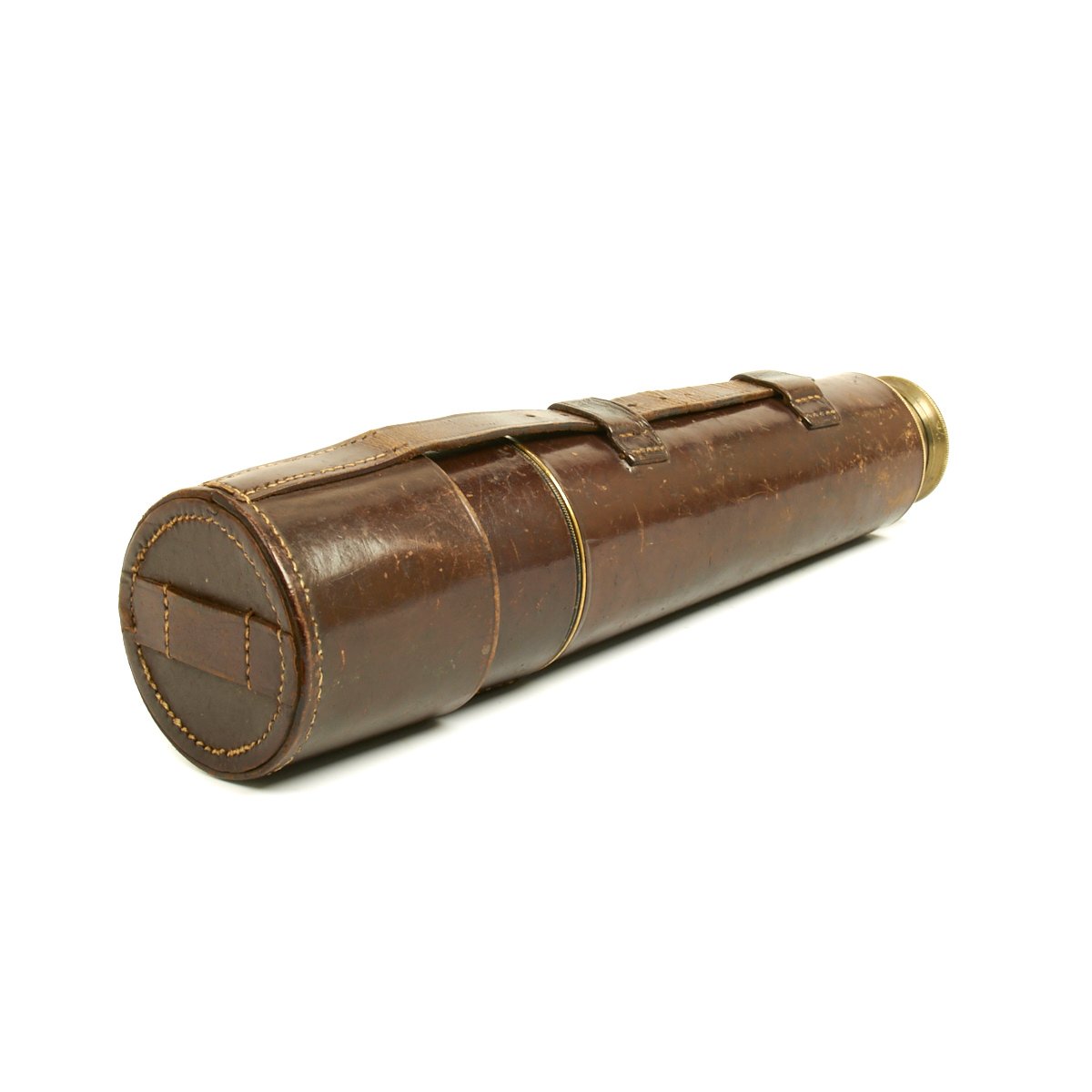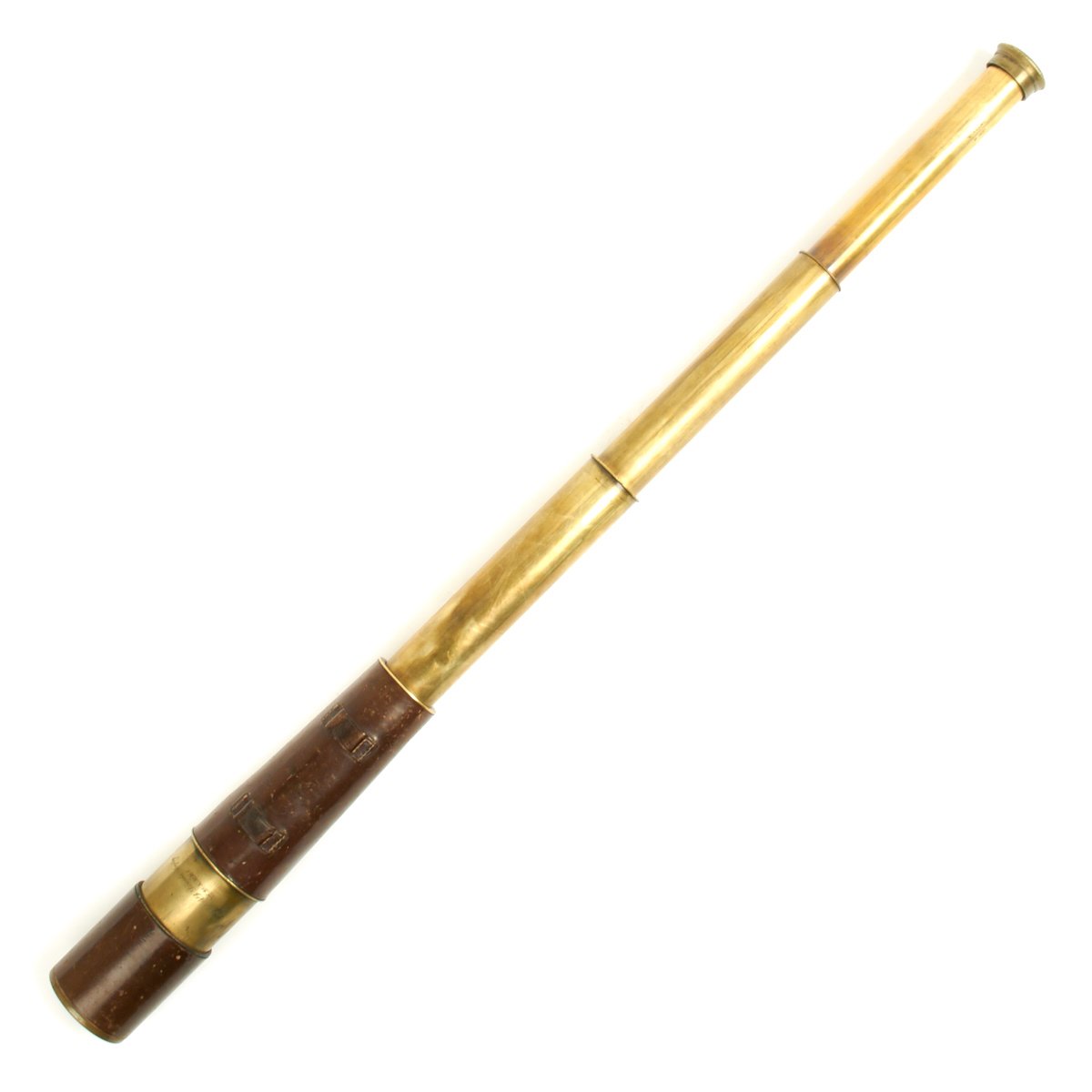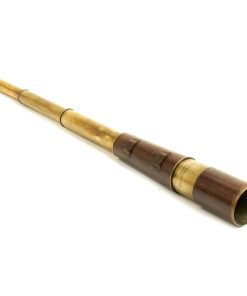Original British Officer’s Telescope by Dollond named to Maj. R.C.A.B Bewicke-Copley of the K.R.R.C. Original Items
$ 495,00 $ 148,50
Original Item: One of a Kind. Nobody likes defeat, but that is what the British suffered at the hands of the Boers at the famous Battle of SPION KOP in 1900. The British were under the field command of MAJOR ROBERT C.A.B. BEWICKE-COPLEY of 3rd Battalion of the KING’S ROYAL RIFLE CORP.
Born with only the surname of BEWICKE in 1855, he was schooled at RUGBY (Remember “John Brown’s Schooldays”?), then after attending OXFORD he joined the K.R.R.C. in 1887. As a Captain he had taken part in the NILE CAMPAIGN of 1884/85. He then married an heiress named Copley in 1886 and took the name “BEWICKE-COPLEY” in 1892, a very wise move for an ambitious family. His son was awarded by Act of Parliament the old family title of LORD CROMWELL of the Copley family, which was granted by KING EDWARD III in July of 1923, thus becoming the 5th LORD CROMWELL. (No Relation with Thomas Cromwell from King Henry the VIII’s time or with OLIVER CROMWELL of English Civil War fame).
He was promoted Major in 1894 and served on the North West Frontier and Chitral in India and was mentioned in dispatches. He took part in the South African BOER WAR and was the field Commander at the famousBATTLE OF SPION KOP, which the British LOST. He served also at COLENSO. He became a BRIGADIER GENERAL in 1916, having retired from active service in 1912. He died in 1923.
This fine three draw telescope measures 33″ overall when fully extended and 10 1/2″ when closed. It is fitted with a movable sun shade to the front and the body is covered in brown leather to match the Officer’s Sam Browne equipment. Under the sun shade the brass barrel is engraved in elegant script:-
Maj. R.C.A.B. Bewicke-Copley
3rd. Bn. K.R.R.C.
The telescope is in excellent condition, still functional with clear optics. The largest diameter draw of the telescope can be a bit stiff at times. It is maker marked on the side of the smallest draw by the eyepiece:
DOLLOND LONDON
“SIGNALLING”
No 14197
The only real shortcoming is that the leather strap and eyepiece cover are missing: only the front lens cover remains. Makes a great display piece, as it had been in a British Collection for more than 50 years and only came to sale in 2017 when I.M.A. secured some 30 quality British historical telescopes from 1760 to 1918.
Ready to display and add to any collection.
Fast Shipping with Professional Packaging
Thanks to our longstanding association with UPS FedEx DHL, and other major international carriers, we are able to provide a range of shipping options. Our warehouse staff is expertly trained and will wrap your products according to our exact and precise specifications. Prior to shipping, your goods will be thoroughly examined and securely secured. We ship to thousands clients each day across multiple countries. This shows how we're dedicated to be the largest retailer on the internet. Warehouses and distribution centres can be located throughout Europe as well as the USA.
Note: Orders with more than one item will be assigned a processing date depending on the item.
Before shipping before shipping, we'll conduct a thorough inspection of the items you have ordered. Today, the majority of orders will be delivered within 48 hours. The delivery time will be between 3-7 days.
Returns
The stock is dynamic and we cannot completely manage it because multiple stakeholders are involved, including our factory and warehouse. So the actual stock may alter at any time. It's possible that you may not receive your order once the order has been made.
Our policy is valid for a period of 30 days. If you don't receive the product within 30 days, we are not able to issue a refund or an exchange.
You can only return an item if it is unused and in the same state as the day you received it. You must have the item in its original packaging.
Related products
Uncategorized
Uncategorized
Armoured Fighting Vehicles of the World: AFVs of World War One (Hardcover Book) New Made Items
Uncategorized
Uncategorized
Uncategorized
Uncategorized
Uncategorized
Uncategorized
Uncategorized
Uncategorized
Uncategorized
Uncategorized
Uncategorized
Uncategorized
Uncategorized
Uncategorized
Uncategorized
